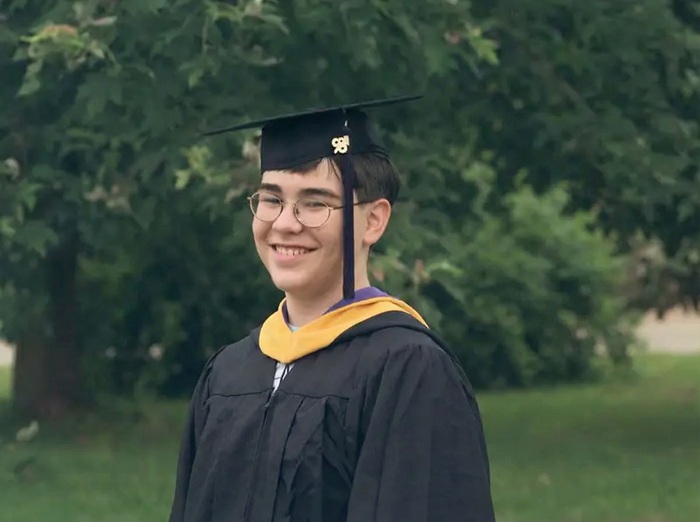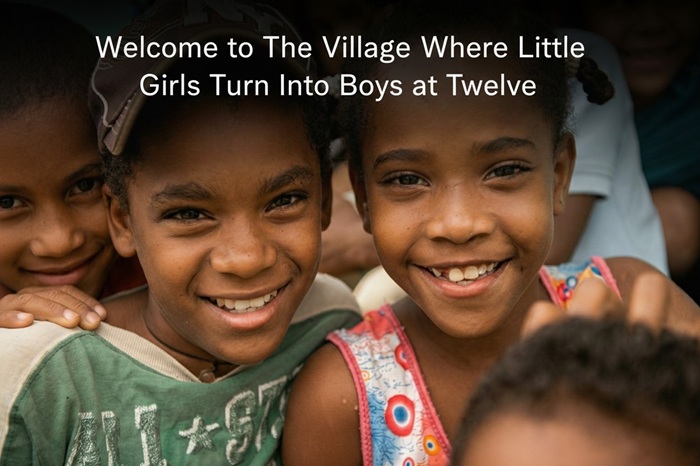In the South Pacific, on the island of Tanna in the nation of Vanuatu, a small community has maintained one of the most unusual belief traditions known to anthropology. For more than half a century, members of this remote community held a deep reverence for Prince Philip, the late Duke of Edinburgh, whom they regarded as a divine figure connected to their ancestral stories. The belief grew from older customs and formed a bridge between traditional spirituality and the arrival of the modern world. Though it appears unusual to outside observers, it fits naturally within the community’s worldview and remains one of the most striking examples of cultural interpretation.
This article traces the history of the belief, explains how it developed, explores what it meant to the people of Tanna, and looks at how the tradition has changed since the passing of Prince Philip in 2021. It also places this tradition within the wider story of contact between island societies and outside powers, giving readers a clearer sense of the cultural, social, and historical influences that shaped it.
The Island Setting
Tanna is one of the major islands of Vanuatu, a country made up of dozens of islands scattered across the southwestern Pacific. The land rises in lush green ridges, with villages set back from the coast and shielded by forest. The island is known for its active volcano, Mount Yasur, whose constant rumbling forms part of the local environment. Many of the island’s people follow traditional ways of life. Villages often rely on local crops, fishing, and small-scale farming. Customs involving ancestral spirits remain important.
The community most closely associated with the worship of Prince Philip lives in the villages of Yaohnanen and Yakel, situated inland from the western coast of Tanna. The area is far from the major towns, and until recent decades it remained mostly untouched by modern development. This isolation allowed old beliefs to survive. When new influences eventually reached the island, they were interpreted through the lens of existing traditions.
Origins Of The Belief
To understand why the community later identified Prince Philip as a divine figure, it is helpful to look at older traditions on Tanna. Many villagers believe in spiritual beings associated with their ancestors. They also hold a story about a powerful figure who would one day return from across the seas. This idea of an outward journey followed by a return appears in several Pacific cultures. It reflects the region’s long history of ocean travel and the symbolic meaning of distant lands.
When European colonisers established control over the region in the nineteenth and twentieth centuries, local communities began to link certain foreign visitors with elements of their traditions. During the colonial era, Vanuatu was jointly administered by Britain and France, a system known as the Anglo-French Condominium. British officials, missionaries, and naval officers visited Tanna from time to time. Their presence shaped how the villagers interpreted the outside world.
It is believed that by the mid twentieth century, villagers identified Prince Philip with the returning spirit figure mentioned in their traditions. The reason for this connection involves several factors. First, the community understood that the Queen and her consort held great authority in the British system. Second, the British were one of the two colonial powers in Vanuatu. Third, Prince Philip was often portrayed as a figure of leadership who stood alongside Queen Elizabeth II. Over time, the villagers came to believe that he was the one foretold in their ancestral stories.
Early Evidence Of The Tradition
Anthropologists first documented the belief in the 1960s, but the villagers themselves say that it began earlier. Some accounts suggest that the idea formed during the period when Vanuatu was still under colonial administration. The exact moment of origin is difficult to identify because the belief grew naturally, shaped by conversations, observations, and interpretations of events.
Photographs of Prince Philip were circulated during colonial times. When villagers saw images of him dressed in ceremonial uniform, they felt the pictures aligned with descriptions in their stories. The royal family’s connection to the sea also played a role. Prince Philip served in the Royal Navy and often appeared in naval attire. This image matched the tradition of a spirit coming from distant waters.
By the time Vanuatu gained independence in 1980, the belief was already established. It became part of the cultural identity of the community and remained consistent for decades.
How The Villagers Expressed Their Belief
Life in Yaohnanen and Yakel follows a rhythm shaped by tradition. The villagers farm the land, hunt in the forest, and hold ceremonies to mark important events. Their reverence for Prince Philip formed one part of their spiritual structure. It did not replace older customs. Instead, it fitted within them, adding a modern figure to ancient beliefs.
Villagers displayed photographs of Prince Philip in special places inside their homes. They kept these images clean and treated them with care. There were also ceremonies where villagers danced, sang, and prayed for his protection. When Prince Philip made public appearances on the news, villagers sometimes held small gatherings to watch recordings or view printed pictures.
One of the most unusual exchanges between the villagers and the royal household took place in the 1970s. A British official visited Tanna and noticed the villagers’ interest in the Queen’s husband. When this information reached the royal household, Prince Philip decided to respond with courtesy.
He sent the villagers an official portrait, signed and delivered with respect. The villagers treasured the image and later sent a ceremonial club to him as a symbol of their recognition. Prince Philip then returned another photograph showing him holding the club. This back-and-forth deepened the community’s conviction that he was the figure spoken of in their traditions.
Visits From Tanna To Britain
The relationship between the villagers and the royal household remained distant yet warm for many years. In 2007, a small group from Tanna travelled to the United Kingdom to meet Prince Philip. The event was arranged quietly and respectfully. The villagers dressed in their traditional clothing and visited Windsor Castle, where they were received in a private setting.
The meeting lasted only a short time, but it held deep spiritual meaning for the visitors. For the villagers, the encounter confirmed what they had long believed. They returned to Tanna with stories that strengthened their tradition. The meeting also drew international attention and brought the custom to a wider audience.
The Passing Of Prince Philip
When Prince Philip died in April 2021, the news reached Tanna through radio and word from neighbouring towns. The villagers observed a period of mourning. Men and women gathered in the village clearing, spoke quietly among themselves, and carried out rituals of respect. Some expressed sadness, while others interpreted his passing in spiritual terms, believing that he had returned to the world of the ancestors.
Anthropologists who visited the island after his death reported that the community continued to honour him. They held small ceremonies in the days following the announcement and then began to consider how the tradition should continue. Some elders spoke of shifting attention to Prince Charles, now King Charles III, while others believed that Prince Philip’s spirit would remain with them, independent of his physical life.
Cultural Interpretation And Outside Reactions
To outsiders, the idea of worshipping a member of the British royal family may appear strange, but anthropologists have explained it as a natural expression of cultural interpretation. The villagers of Tanna built their understanding of Prince Philip on the foundation of long-standing beliefs rather than on modern political ideas. Their practice reflects the way island communities sometimes interpret new influences in relation to older traditions.
It is also important to understand that the villagers did not consider themselves part of the British political system. They did not follow royal news in the same way as people in Britain or other Commonwealth countries. Their focus remained spiritual rather than political.
Many researchers have described the tradition as dignified and sincere. It was not a form of mockery or misunderstanding. It was an example of how cultural systems adapt to global change. Visitors to Tanna who approached the community with respect were often welcomed and given explanations of the belief in a calm and thoughtful manner.
The Role Of Oral Tradition
Much of the belief surrounding Prince Philip survived through oral storytelling. Elders passed tales to younger members of the community, describing how a figure of high rank would one day return from across the sea to protect the island. The stories often used symbolic language, focusing on loyalty, strength, and the bond between land and ancestor.
When new influences arrived, the villagers did not abandon these traditions. Instead, they brought the new figure into the existing framework. Oral traditions are flexible, and the belief grew as each generation added its own interpretation.

Tanna And The Wider World
Over the past few decades, Tanna has experienced slow but steady change. Roads improved, small airstrips brought visitors, and limited access to technology reached some villages. Even with these changes, many residents continued to value traditional customs. The reverence for Prince Philip reflected their belief that modern influences did not need to erase older practices.
The tradition also became known outside Vanuatu. Journalists visited the island, and documentaries were filmed about the villagers’ relationship with the royal household. While this increased attention brought some tourism, village elders remained cautious. They insisted that visitors treat their customs with care.
The Future Of The Belief
Since the passing of Prince Philip, the community has taken time to reflect on the future of their tradition. Some villagers believe that the spirit of Prince Philip will remain central. Others think that his role may shift to his son, King Charles III, who has long been known in the region through his environmental work and his connection to the Commonwealth.
Regardless of future direction, what remains clear is that the villagers view the tradition as part of their cultural identity. It is not a passing curiosity but a long-standing belief shaped by generations of interpretation.
Why This Story Matters
The belief in Prince Philip on Tanna offers a rare insight into how cultures adapt to outside influences. It provides an example of a community maintaining its identity while acknowledging a figure from beyond its shores. The tradition also demonstrates the power of storytelling and the resilience of oral history.
For many readers, the story encourages a broader understanding of how diverse human belief systems can be. It also reminds us that respect for cultural differences is essential in a global society. The villagers’ sincerity, dignity, and devotion have been noted by researchers for decades, and their tradition remains one of the most widely discussed examples of cultural interpretation in the Pacific.





